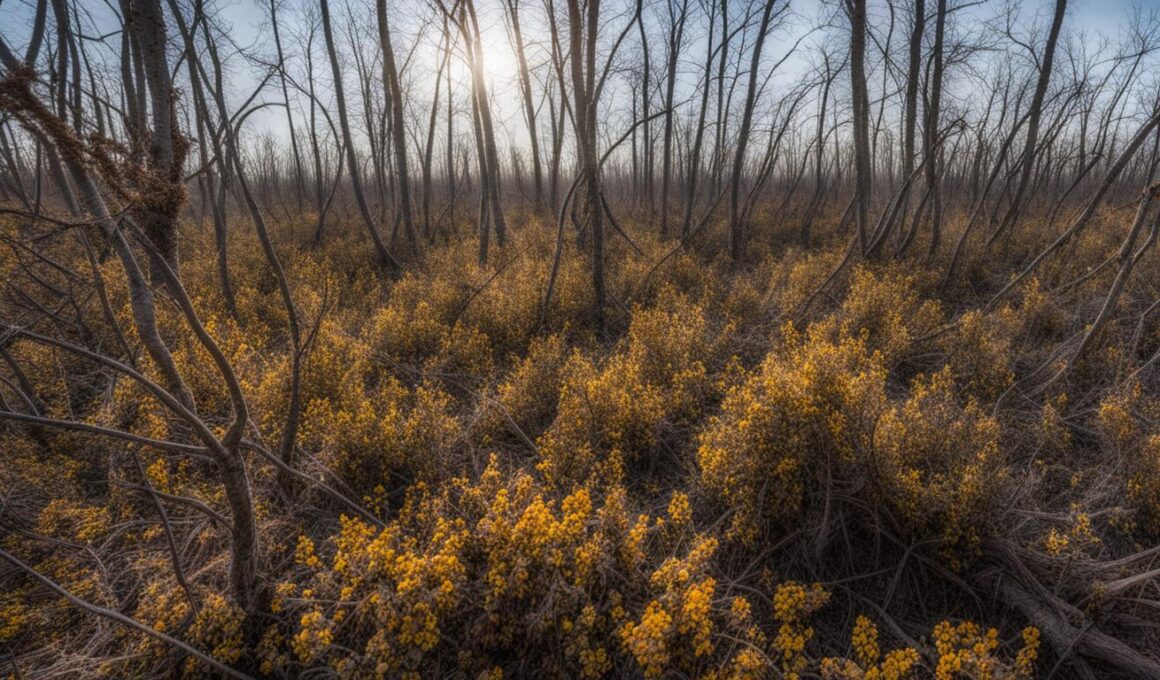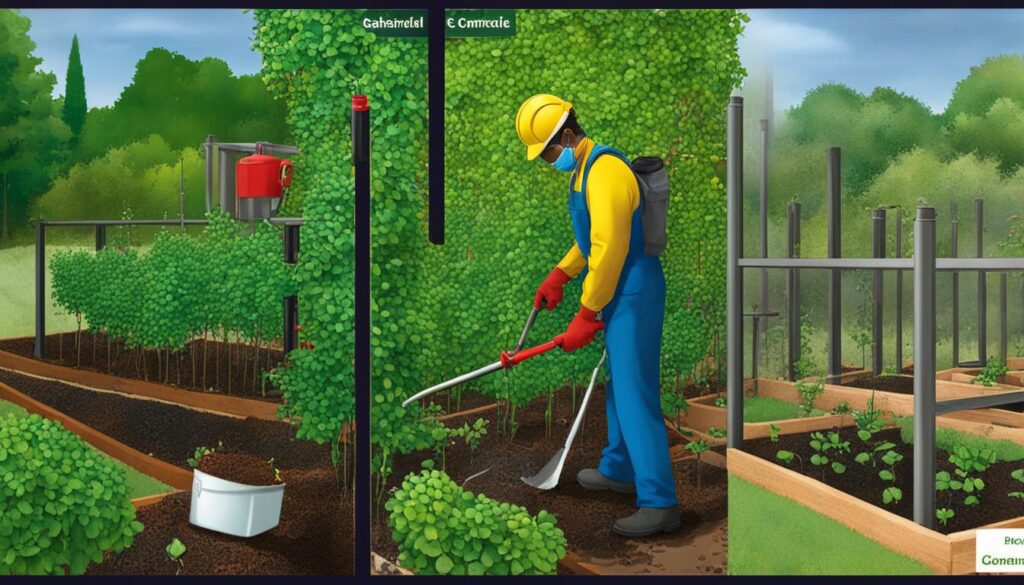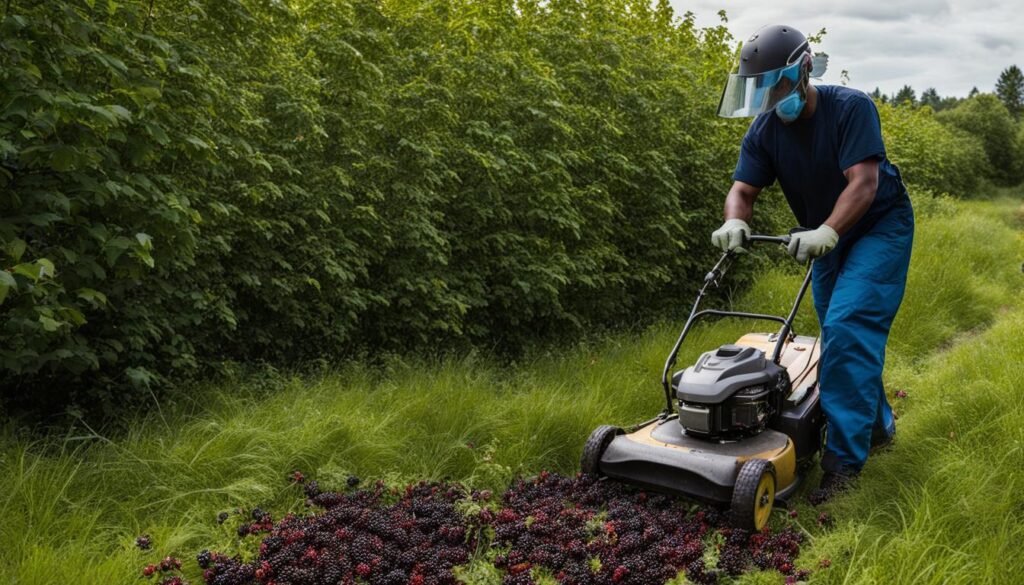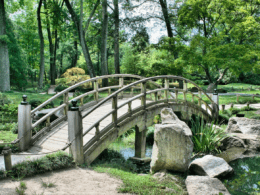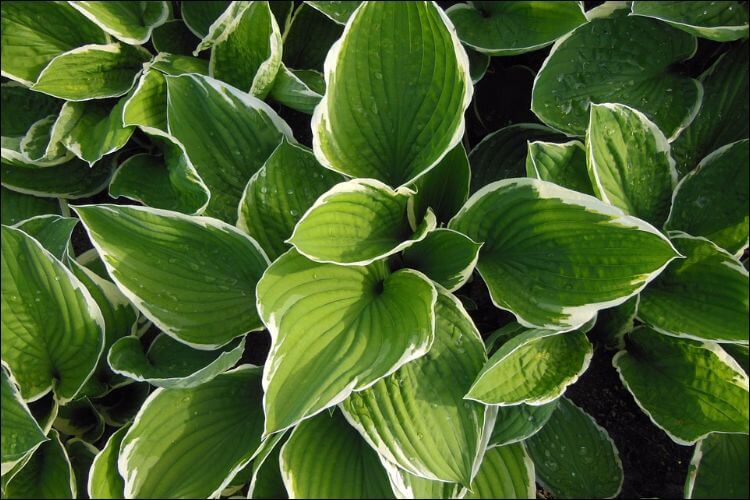Blackberry bushes, particularly the Himalayan blackberry and cutleaf blackberry species, can be invasive and problematic in home landscapes and natural areas. They can quickly spread and form dense thickets, blocking access to recreational areas and becoming a fire hazard. Besides being difficult to control, they can also serve as a food source for pests like rats. However, it is possible to manage and control these blackberry bushes through various methods.
Post Summary
- Blackberry bushes can be invasive and problematic in home landscapes and natural areas.
- They can quickly spread and form dense thickets, blocking access to recreational areas and becoming a fire hazard.
- Blackberry bushes can serve as a food source for pests like rats.
- There are various methods to manage and control blackberry bushes.
- By following the right techniques and consistent effort, it is possible to control and reduce blackberry populations.
Identification and Biology of Blackberry Bushes
Blackberry bushes belong to the genus Rubus and are closely related to several economically important crops. In California, there are 11 species of Rubus, with four being non-native. The Himalayan blackberry and cutleaf blackberry are the most weedy and problematic species. Blackberry plants have showy flowers that range in color and produce edible fruits. They can live for over 25 years, and new canes are produced annually from the root crown. Blackberries can be spread by animals, and their seeds can remain dormant in the soil for a long time.
Blackberry flowers are composed of five white or pink petals, and they appear in clusters from late spring to mid-summer. These flowers attract pollinators such as bees, butterflies, and other insects. After pollination, the flowers develop into small, green berries that gradually ripen to a dark purple or black color. The ripe blackberries are juicy and sweet, making them a popular fruit for culinary uses.
The growth habit of blackberry bushes is characterized by vigorous, thorny canes that can reach heights of up to 10 feet. These canes can grow rapidly and form dense thickets, which can be challenging to manage. The canes are armed with sharp thorns that can cause injury, so caution should be exercised when working around blackberry bushes. It is important to identify blackberry species accurately to determine the most effective management strategies.
Impact of Blackberry Bushes
Blackberries can be highly competitive shrubs and vines that form dense stands. They can smother existing plants, inhibit the growth of desirable plants, and block access to recreational areas and waterways. The accumulation of dead stems from blackberry bushes can create a dangerous fire hazard. In urban areas, blackberries can also serve as a source of food and shelter for pests like rats. However, blackberries do provide food and cover for birds, mammals, and insects, and many people enjoy harvesting their berries.
Blackberry bushes are known for their ability to form dense stands, crowding out other plants and reducing biodiversity. Their vigorous growth and thorny nature make them effective at creating impenetrable thickets, limiting access for both humans and wildlife. This can be particularly problematic in natural areas and parks where recreational activities and ecological processes can be hindered by these dense blackberry stands.
Furthermore, the accumulation of dead stems and foliage from blackberry bushes can pose a significant fire hazard. These dry and flammable materials can easily ignite, leading to the spread of wildfires and endangering nearby structures and habitats. Therefore, it is crucial to manage and control blackberry populations to mitigate these risks and promote the health and safety of our environments.
Despite their negative impacts, blackberries also have ecological value. They provide food and cover for various species of birds, mammals, and insects. Birds, in particular, play a crucial role in dispersing blackberry seeds, contributing to the plant’s reproductive success. Additionally, many people enjoy harvesting blackberry fruits for culinary purposes, further highlighting the multifaceted nature of these shrubs.
Management of Blackberry Bushes
If you’re dealing with blackberry bushes in your garden or natural areas, there are several effective methods for managing their population. The key is to control their growth rather than trying to completely eradicate them. Here are some strategies you can use:
- Mechanical removal: For small infestations, manually removing blackberry bushes can be a viable option. This can involve hand-pulling the plants or using specialized tools designed for blackberry removal. Make sure to remove as much of the root system as possible to prevent regrowth.
- Treatment with herbicides: Chemical control using herbicides can be an effective way to manage blackberry bushes. Look for herbicides containing triclopyr or glyphosate, which are specifically formulated for blackberry control. Follow the instructions carefully and apply the herbicides directly to the foliage or cut stems.
- Cultural control: Another approach to managing blackberry bushes is through cultural control methods. This involves planting competitive vegetation that can outcompete the blackberries and prevent their growth. You can also use grazing animals like goats to browse on the blackberry plants and keep their growth in check.
It’s important to note that blackberry bushes can be persistent, and follow-up treatments may be necessary to ensure long-term control. Regular monitoring and ongoing maintenance are essential to prevent regrowth and keep the blackberry population in check.
Remember, managing blackberry bushes requires consistent effort and a combination of strategies. Mechanical removal, treatment with herbicides, and cultural control methods are all effective ways to keep the population under control and reclaim your garden from these invasive plants.
Comparative Table: Mechanical Removal Vs. Chemical Control
| Method | Mechanical Removal | Chemical Control |
|---|---|---|
| Effectiveness | Effective for small infestations | Effective for larger infestations |
| Time Required | Time-consuming, especially for extensive infestations | Quick application, but may require multiple treatments |
| Sustainability | Eco-friendly, minimal environmental impact | May have some environmental concerns, requires careful application |
| Cost | Low cost, mainly labor-intensive | Cost varies depending on herbicide and treatment area |
As you can see from the table, both mechanical removal and chemical control have their advantages and drawbacks. It’s important to consider factors such as the size of the infestation, time constraints, environmental impact, and cost when deciding on the best approach for managing blackberry bushes in your specific situation.
Digging Out Blackberry Bushes
When it comes to managing blackberry bushes, one effective method is digging them out. After cutting the vines to ground level, you can remove the exposed blackberry stump by carefully digging around the roots. The goal is to remove as many roots as possible to minimize the chance of regrowth. This technique requires physical effort, but it is most suitable for small infestations where complete removal is desired.
By digging out the blackberry bushes, you are ensuring that the entire plant is removed from the ground. This reduces the likelihood of new shoots sprouting from the root system or remaining dormant seeds in the soil. However, it’s important to note that this method may not be practical for large-scale infestations as it can be labor-intensive.
To effectively dig out blackberry bushes, use a shovel or a spade to carefully loosen the soil around the stump. Begin by cutting through any remaining connecting roots and work your way outward, gradually lifting the plant out of the ground. It’s essential to dispose of the removed plant material properly to prevent any unintentional spread.
| Pros | Cons |
|---|---|
| Digging out the blackberry bushes ensures complete removal from the ground. | This method can be labor-intensive and time-consuming, especially for large infestations. |
| Minimizes the chance of regrowth by removing as many roots as possible. | Not practical for areas with limited accessibility or dense vegetation. |
| Reduces the risk of remaining dormant seeds germinating. | Requires physical effort and proper disposal of plant material. |
Remember to wear appropriate protective gear while digging out blackberry bushes, such as gloves and sturdy footwear. Additionally, ensure that you dispose of the removed plants according to local regulations or guidelines to prevent unintentional spread or reinfestation.
Mowing Blackberry Bushes
To control larger patches of blackberry bushes, mowing can be an effective method. By regularly mowing the area, you can keep the blackberry bushes under control and prevent them from spreading further. It is important to establish a regular mowing schedule to ensure the best results.
Mowing helps to prevent the spread of blackberry seeds by cutting down the mature plants before they have a chance to produce and disperse seeds. This reduces the risk of new blackberry seedlings sprouting up and establishing themselves in your garden or landscape.
When mowing blackberry bushes, it is recommended to set the lawnmower blades at the lowest height possible. This will help to cut the bushes as close to the ground as possible, limiting their ability to regrow. Additionally, it is important to dispose of the mowed blackberry plant material properly to prevent any potential reestablishment.
Benefits of Regular Mowing
- Controls the growth and spread of blackberry bushes
- Prevents the production and dispersal of blackberry seeds
- Keeps the blackberry bushes at a manageable height
- Improves the overall appearance of the landscape
By incorporating regular mowing into your blackberry bush control plan, you can effectively manage the growth and spread of these invasive plants. It is a proactive approach that helps prevent new blackberry seedlings from taking root and becoming a larger problem in the future.
Treatment Options for Blackberry Bushes
If you’re dealing with a stubborn infestation of blackberry bushes, there are professional treatments available that can help you effectively eradicate them. These treatments offer an eco-friendly solution that targets the root system and prevents regrowth. Here are the treatment options you can consider:
Cutting and Treating New Leaves
Professional treatments involve cutting the blackberry plant down to the stump and then precisely treating the small new leaves that sprout. By targeting the new growth, the treatment disrupts the plant’s ability to photosynthesize and gradually leads to the death of the root system. This ensures a long-term solution and prevents the blackberry bushes from coming back.
Root System Die-Off
The treatment options for blackberry bushes result in the slow die-off of the root system. This is crucial because even if you cut down the visible parts of the plant, the roots can still produce new shoots and lead to regrowth. By effectively targeting the roots, the treatment ensures that the blackberry bushes are permanently removed from your landscape or natural area.
| Treatment Option | Description |
|---|---|
| Cutting and Treating New Leaves | This treatment involves cutting the blackberry plant down to the stump and treating the small new leaves that sprout. By targeting the new growth, the treatment prevents regrowth and leads to the death of the root system. |
| Root System Die-Off | The treatment options for blackberry bushes result in the slow die-off of the root system. This ensures that the blackberry bushes are permanently removed and prevents regrowth. |
These professional treatments are safe for the environment, as they do not harm other plants or have any negative soil activity or runoff. By opting for these eco-friendly treatments, you can effectively eliminate blackberry bushes and restore the health and beauty of your landscape.
Covering Blackberry Bushes
To effectively control blackberry bushes, an alternative method is to cover the crowns with light-blocking covers. This technique prevents photosynthesis, ultimately causing the vines to die. By utilizing opaque tarps or sheets of plastic, you can completely block the light from reaching the blackberry bushes, inhibiting their growth and spread.
Covering blackberry crowns should be done for a full year to ensure effective control. This extended timeframe allows for the disruption of the plant’s life cycle and prevents regrowth. During this period, it is important to regularly monitor the covered area to ensure the covers remain intact and in place. Any gaps or tears in the covers should be promptly repaired to maintain the light-blocking effect.
| Covering Technique | Advantages | Disadvantages |
|---|---|---|
| Using opaque tarps | – Provides complete light obstruction – Easy to secure |
– Requires ongoing maintenance – Potential for covers to shift or tear |
| Sheets of plastic | – Cost-effective option – Can be customized to fit any area |
– May require additional support to prevent shifting – Prone to tearing in harsh weather conditions |
Remember, covering blackberry bushes is just one method of control and should ideally be combined with other management techniques for more effective results. It is essential to have a comprehensive approach and consider the specific needs and challenges of your blackberry infestation.
Benefits of Covering Blackberry Bushes:
- Prevents photosynthesis and inhibits growth
- Effective in disrupting the blackberry plant’s life cycle
- Reduces the chances of regrowth and spread
“Covering blackberry crowns with light-blocking materials is a strategic and eco-friendly approach to control blackberry infestations. By preventing photosynthesis, you can starve the blackberry bushes of the energy they need to thrive. Remember to be diligent with the covers and monitor the covered area regularly for optimal results.”
Expert Help for Blackberry Bush Removal
If the infestation of blackberry bushes in your garden or property is extensive or challenging to manage, seeking professional help can be beneficial. Professional blackberry removal services can provide expert assistance in permanently removing blackberry bushes and ensuring the success of the removal project.
Professional blackberry removal services offer a range of specialized techniques and equipment to tackle even the most stubborn blackberry infestations. They have the expertise to assess the extent of the problem and develop a tailored removal plan that addresses your specific needs. Their knowledge of effective eradication methods can save you time, effort, and frustration.
By enlisting the help of professionals, you can be confident in not only the removal of existing blackberry bushes but also in preventing their regrowth. These experts are equipped with the tools and knowledge to remove blackberry bushes at their root systems, ensuring a permanent solution. With their assistance, you can reclaim your garden from the persistent and invasive nature of blackberry bushes.
Seeking expert help for blackberry bush removal is especially beneficial if you have a large or complex infestation. Instead of struggling to manage the problem yourself, professional services can handle the intensive work required. They provide free in-person quotes, allowing you to understand the scope of the project and make an informed decision. Don’t let blackberry bushes overrun your property when help is just a call away.
| Benefits of Professional Blackberry Removal Services |
|---|
| Expert assistance in permanently removing blackberry bushes |
| Saving time, effort, and frustration |
| Tailored removal plan based on your needs |
| Specialized techniques and equipment for effective eradication |
| Preventing regrowth of blackberry bushes |
| Intensive work handled by professionals |
| Free in-person quotes to understand the scope of the project |
Additional Tips for Blackberry Bush Control
Controlling blackberry bushes requires a long-term approach and ongoing maintenance. Once you have removed the blackberry plants, it is important to take steps to prevent their regrowth. One effective method is to plant alternative vegetation that can outcompete new blackberry seedlings. Choose hardy, fast-growing plants that can quickly establish themselves and create a dense cover, inhibiting the growth of blackberry bushes. Some good options include native grasses, groundcovers, and vigorous perennial plants. By filling the space with desirable vegetation, you can help prevent the reestablishment of blackberry bushes and maintain long-term control.
In addition to planting alternative vegetation, ongoing maintenance is crucial for managing blackberry bushes. Regular mowing or herbicide treatments can help prevent regrowth and keep the population under control. Mowing should be done on a consistent schedule to cut down the mature plants before they have a chance to produce and disperse seeds. Herbicides that contain triclopyr or glyphosate can be effective in targeting blackberry bushes, but it is important to follow the product instructions and take appropriate safety precautions.
To ensure the success of your blackberry bush control efforts, it is recommended to monitor the area regularly for new infestations. Conduct regular inspections and promptly address any new growth before it becomes a larger problem. By staying vigilant and taking proactive measures, you can maintain a blackberry-free landscape and enjoy the benefits of a well-maintained outdoor space.
| Additional Tips for Blackberry Bush Control |
|---|
| Plant alternative vegetation |
| Choose hardy, fast-growing plants that can outcompete blackberry seedlings |
| Native grasses, groundcovers, and vigorous perennials are good options |
| Ongoing maintenance |
| Regular mowing or herbicide treatments can help prevent regrowth |
| Mow on a consistent schedule to cut down mature plants before they produce seeds |
| Herbicides containing triclopyr or glyphosate can be effective |
| Monitor for new infestations |
| Conduct regular inspections and address new growth promptly |
Conclusion
Blackberry bushes can be invasive and pose challenges in home landscapes and natural areas. However, with the right management techniques and consistent effort, it is possible to control and reduce blackberry populations. Methods such as mechanical removal, mowing, treatment with herbicides, and covering can effectively manage blackberry bushes. Seeking professional help can also ensure the permanent removal of blackberry infestations. Ongoing maintenance and planting alternative vegetation are essential for long-term control. By following these guidelines, you can successfully reclaim your garden from blackberry bushes.
Is Bleach an Effective Method for Killing Bushes, similar to killing blackberry bushes?
Bleach is not an effective method for killing bushes, including blackberry bushes and lilac bushes. While bleach is a powerful disinfectant, it can harm the surrounding soil and plants. It’s best to use herbicides specifically designed for removing unwanted bushes without damaging the surrounding vegetation.
FAQ
How can I effectively kill blackberry bushes?
Blackberry bushes can be effectively killed through various methods such as mechanical removal, mowing, treatment with herbicides, and covering the crowns with tarps or plastic sheets. Seeking professional help can also ensure permanent removal.
What are the most problematic blackberry species?
The Himalayan blackberry and cutleaf blackberry are considered the most weedy and problematic species of blackberry bushes.
How do blackberry bushes impact landscapes and natural areas?
Blackberry bushes can form dense stands, smother existing plants, inhibit the growth of desirable plants, block access to recreational areas and waterways, and create a fire hazard. They can also serve as a food source for pests like rats.
What are the methods of managing blackberry bushes?
Blackberry bushes can be managed through mechanical removal (hand-pulling or using specialized tools), mowing, treatment with herbicides, cultural control (planting competitive vegetation or using grazing animals), and covering the crowns with tarps or plastic sheets.
How do I dig out blackberry bushes?
To dig out blackberry bushes, cut the vines to ground level and then remove the exposed blackberry stump by digging around the roots. The more roots that are removed, the less chance of regrowth.
Can I control blackberry bushes by mowing?
Yes, mowing can help control blackberry bushes. By cutting the area regularly with a lawnmower, you can prevent the spread of seeds and control the growth of blackberry bushes. However, consistent and frequent mowing is necessary for effectiveness.
Are there professional treatments available for blackberry bush removal?
Yes, professional blackberry removal services can provide free in-person quotes and expert assistance in permanently removing blackberry bushes. These treatments are eco-friendly and do not harm other plants or have soil activity or runoff.
How can I effectively cover blackberry bushes?
To effectively control blackberry bushes with covers, use opaque tarps or sheets of plastic to block all light and prevent photosynthesis. Cover the crowns for a full year to ensure effective control.
Should I seek professional help for managing extensive blackberry infestations?
If the infestation of blackberry bushes is extensive or challenging to manage, seeking professional help can be beneficial. Professional blackberry removal services can provide expert assistance and ensure the success of the removal project.
What are additional tips for blackberry bush control?
After removing blackberry plants, it is crucial to plant hardy alternative vegetation to outcompete new blackberry seedlings. Ongoing maintenance, such as regular mowing or herbicide treatments, may be necessary to prevent regrowth. Continuously monitor the area for new infestations.





